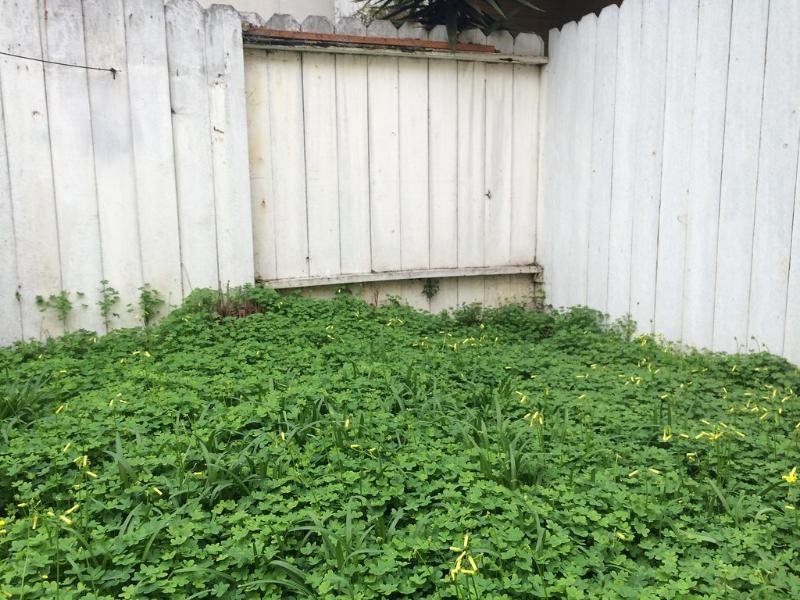Clover is a low-growing plant that can make an excellent green ground cover in lawns and fields. Here are some of the main takeaways for encouraging clover growth:
- Soil preparation – Properly preparing soil by loosening, aerating, and adding organic matter allows clover seeds to establish well.
- Proper mowing – Mowing no shorter than 2-3 inches gives the clover the room it needs to spread. Avoid scalping lawns.
- Overseeding – Sowing more clover seeds in thin areas or bare patches helps clover propagate in lawns.
- Fertilization – Using a fertilizer lower in nitrogen and higher in phosphorus and potassium supports clover growth.
- Weed control – Managing broadleaf and grassy weeds allows the clover space and nutrients to spread.
Table of Contents
Why Grow Clover?

Before diving into the details of encouraging clover growth, understanding the benefits of clover can provide extra motivation:
- Nitrogen-fixing – Clover takes nitrogen from the air and converts it into a usable form for itself and surrounding plants. This can reduce the need for nitrogen fertilizers.
- Ground cover – The low-growth habit of clover serves as a living green mulch that blocks light from reaching weeds. Its spreading nature covers the bare ground.
- Soil health – As a legume, clover contributes organic matter to the soil, improving tilth, nutrient availability, and moisture retention.
- Drought tolerance – The deep root system of clover makes it more tolerant of low rainfall and drought conditions than turfgrass.
- Pollinators – The flowers of clover attract bees, butterflies, and other beneficial pollinating insects to landscapes and lawns.
Understanding why growing clover can be beneficial sets the stage for the practices involved in actively encouraging clover growth.
Soil Preparation
Proper soil preparation sets the foundation for lush clover establishment and spreading:
Aeration
Use an aerator to punch holes throughout the soil, especially in compacted areas:
- Allows better water, air, and root penetration
- Opens up space for seeds to make soil contact
- Cores left behind decompose to provide organic matter
Loosening
Rake or till the soil lightly to further break up any compressed areas and smooth the surface:
- Removes small obstructions that can hamper germination
- Levels of low and high spots for even seed distribution
Organic Matter
Mix 1/4″-1/2″ of compost or well-rotted manure into the soil:
- Improves moisture retention and drainage
- Supplies a diversity of nutrients
- Promotes beneficial microbial activity
Prepared soil gives clover the welcoming and nurturing home it needs to establish and expand into thick, persistent growth.
Proper Mowing
The mowing practices used in a lawn or field area have a significant impact on whether clover will thrive or decline:
Mowing Height
- Cut no shorter than 2-3 inches
- Taller heights give clover foliage room to absorb more sunlight
| Height | Effect |
|---|---|
| Short | Stunts clover growth |
| Medium | Allows moderate spreading |
| Tall | Maximizes clover growth |
Frequency
- Mow often enough so no more than 1/3 of the blade length is cut
- Frequent drastic cuts prevent substantial leaf surface area
Blades
- Keep mower blades sharp
- Ragged cuts damage plants
Proper mowing invigorates clover while close scalping mowing weakens and thins it out over time.
Overseeding
When clover growth is sparse or patchy, overseeding can help fill in thin areas:
When to Overseed
- Spring
- Fall
- Avoid summer heat stress
Methods
By Hand
- Obtain clover seed
- Distribute seed in bare or thin areas
- Consider mixing seed with inert material (e.g. sand) for even spreading
Slit Seeder
- Use the machine to cut grooves in the soil
- Drop clover seed precisely into grooves
- Seed makes direct contact with soil
Overseeding combined with the cultural practices described in this article will help clover propagate into lush, extensive ground cover over time.
Fertilization
Applying fertilizer tailored to clover’s nutritional needs aids expansion:
Key Nutrients
- Phosphorus – root/seed formation
- Potassium – drought resistance, spreading
- Lower nitrogen – promotes blooms
| Nutrient | Effect |
|---|---|
| Nitrogen (low) | Enhances flowering/spreading |
| Phosphorus (high) | Strong roots and seeds |
| Potassium (high) | Hardiness and lateral growth |
Options
Compost/Manure
Clover-Specific Fertilizer Blends
Fertilizing sparingly with the appropriate nutrients gives clover an advantage over other plants.
Weed Control
Vigorous weeds compete with establishing and expanding clover for space, sunlight, nutrients, and moisture:
Pre-Emergence
- Use corn gluten meal as an organic pre-emergent herbicide
- Provides nitrogen while suppressing seeds of annual weeds
Selective Herbicides
- Apply targeted liquid sprays safe for clover
- Controls difficult perennial grass and broadleaf weeds
Keeping weed pressure low ensures clover has the room and resources needed to propagate into a thick ground cover.
Conclusion
Following the keys detailed above makes encouraging lush, expanding clover growth highly achievable:
- Prepare the site for optimal fertility, drainage, and space for roots
- Mow appropriately to allow leaves to capture sunlight
- Fill thin areas through periodic overseeding
- Use tailored fertilization to fuel spreading
- Manage competitive weeds
With a little attention to providing for clover’s basic needs, you’ll soon enjoy a thriving cover of clover across the landscape.

Gardening is my passion and growing plants indoors has always been a stress relief for me. Grow a banana tree in my apartment once (although failed to produce bananas).






